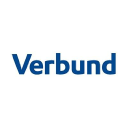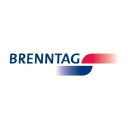EBK.DE

EnBW Energie Baden-Württemberg AG
EBK.DE
(1.8)64,60 EUR
0.6% ROA
3.53% ROE
52.44x PER
18.689.017.287,00 EUR
160.87% DER
2.17% Yield
0.97% NPM
EnBW Energie Baden-Württemberg AG Stock Analysis
EnBW Energie Baden-Württemberg AG Fundamental Analysis
Fundamental analysis in stock investing is like studying the foundation of a house before buying it. It involves looking at a company's financial health, like its earnings, assets, and debts, to determine if it's a good investment based on its fundamental strength and potential for growth.
| # | Analysis | Rating |
|---|---|---|
| 1 |
ROE
The stock's ROE exceeds expectations (20.24%), revealing strong profitability and efficient use of shareholders' equity, making it an attractive investment opportunity. |
|
| 2 |
Dividend
Shareholders can rely on the company's remarkable dividend history, consistently paying dividends for the past five years, demonstrating a steadfast dedication to rewarding investors. |
|
| 3 |
ROA
The stock's ROA (3.08%) indicates that it's doing well in making money from the things it owns. This makes it a good option to invest and make consistent profits. |
|
| 4 |
PBV
The stock's PBV ratio (2.07x) reflects a fair valuation, making it an attractive option for investors seeking balanced opportunities. |
|
| 5 |
Buffet Intrinsic Value
The company's stock seems undervalued (2.735) by Warren Buffett's formula, indicating a promising investment opportunity as its intrinsic value exceeds the market price. |
|
| 6 |
DER
The company has a high debt to equity ratio (137%), which means it owes a lot of money compared to what it actually owns, making it financially risky. |
|
| 7 |
Revenue Growth
Company's revenue has remained stagnant over the past three years, indicating a lack of growth and making it a less favorable option. |
|
| 8 |
Net Profit Growth
Despite the passage of five years, this company's net profit has not shown any improvement, highlighting a lack of growth and making it a less appealing investment prospect. |
|
| 9 |
Assets Growth
Company's revenue has remained stagnant over the past three years, indicating a lack of growth and making it a less favorable option. |
|
| 10 |
Graham Number
The company's Graham number indicates that it is overvalued compared to its stock price, suggesting a potentially unfavorable investment opportunity. |
|
| 11 |
Dividend Growth
The company's dividend growth has shown no improvement in the past three years, making it a less attractive investment option for those seeking increasing returns. |
EnBW Energie Baden-Württemberg AG Technical Analysis
Technical analysis in stock investing is like reading the patterns on a weather map to predict future weather conditions. It involves studying past stock price movements and trading volumes to make predictions about where a stock's price might go next, without necessarily looking at the company's financial health.
| # | Analysis | Recommendation |
|---|---|---|
| 1 | Awesome Oscillator | Buy |
| 2 | MACD | Sell |
| 3 | RSI | Hold |
| 4 | Stoch RSI | Sell |
EnBW Energie Baden-Württemberg AG Price Chart
Financial Statements
Financial statements are like report cards for companies. They show how much money a company makes (income statement), what it owns and owes (balance sheet), and where it spends its money (cash flow statement), helping stock investors understand if a company is healthy and worth investing in.
Income Statements
An income statement for a company is like a scoreboard for its profits and losses. It shows how much money the company made (revenue) and how much it spent to make that money (expenses), helping stock investors see if a company is making a profit or not.
Revenue in stock investing is the total amount of money a company earns from its sales, and it's a key factor that investors consider to assess a company's financial performance and growth potential.
| Year | Revenue | Growth |
|---|---|---|
| 2002 | 8.488.600.000 | |
| 2003 | 10.609.100.000 | 19.99% |
| 2004 | 9.844.000.000 | -7.77% |
| 2005 | 10.769.300.000 | 8.59% |
| 2006 | 13.219.400.000 | 18.53% |
| 2007 | 14.712.200.000 | 10.15% |
| 2008 | 16.305.400.000 | 9.77% |
| 2009 | 15.564.200.000 | -4.76% |
| 2010 | 17.509.000.000 | 11.11% |
| 2011 | 18.789.700.000 | 6.82% |
| 2012 | 19.245.900.000 | 2.37% |
| 2013 | 20.540.300.000 | 6.3% |
| 2014 | 21.002.500.000 | 2.2% |
| 2015 | 21.166.500.000 | 0.77% |
| 2016 | 19.368.400.000 | -9.28% |
| 2017 | 21.974.000.000 | 11.86% |
| 2018 | 20.617.500.000 | -6.58% |
| 2019 | 18.765.000.000 | -9.87% |
| 2020 | 19.694.300.000 | 4.72% |
| 2021 | 32.147.900.000 | 38.74% |
| 2022 | 56.002.600.000 | 42.6% |
| 2023 | 31.875.200.000 | -75.69% |
| 2023 | 44.430.700.000 | 28.26% |
| 2024 | 35.210.800.000 | -26.18% |
Research and Development Expenses are the costs a company incurs to create and improve its products or services, which can be important for investors to evaluate a company's innovation and potential for future growth.
| Year | Research and Development Expenses | Growth |
|---|---|---|
| 2002 | 0 | |
| 2003 | 0 | 0% |
| 2004 | 0 | 0% |
| 2005 | 0 | 0% |
| 2006 | 0 | 0% |
| 2007 | 0 | 0% |
| 2008 | 0 | 0% |
| 2009 | 0 | 0% |
| 2010 | 0 | 0% |
| 2011 | 0 | 0% |
| 2012 | 36.900.000 | 100% |
| 2013 | 26.700.000 | -38.2% |
| 2014 | 27.900.000 | 4.3% |
| 2015 | 29.900.000 | 6.69% |
| 2016 | 37.300.000 | 19.84% |
| 2017 | 39.800.000 | 6.28% |
| 2018 | 42.900.000 | 7.23% |
| 2019 | 55.300.000 | 22.42% |
| 2020 | 71.600.000 | 22.77% |
| 2021 | 38.600.000 | -85.49% |
| 2022 | 28.100.000 | -37.37% |
| 2023 | 0 | 0% |
| 2023 | 47.700.000 | 100% |
| 2024 | 0 | 0% |
General and Administrative Expenses are the costs a company incurs to run its day-to-day operations, such as office rent, salaries, and utilities, which investors consider to understand a company's overall efficiency and management effectiveness.
| Year | General and Administrative Expenses | Growth |
|---|---|---|
| 2002 | 1.628.700.000 | |
| 2003 | 1.628.500.000 | -0.01% |
| 2004 | 1.209.200.000 | -34.68% |
| 2005 | 219.300.000 | -451.39% |
| 2006 | 263.100.000 | 16.65% |
| 2007 | 311.700.000 | 15.59% |
| 2008 | 1.480.400.000 | 78.94% |
| 2009 | 1.617.600.000 | 8.48% |
| 2010 | 449.000.000 | -260.27% |
| 2011 | 415.100.000 | -8.17% |
| 2012 | 356.900.000 | -16.31% |
| 2013 | 381.000.000 | 6.33% |
| 2014 | 418.300.000 | 8.92% |
| 2015 | 437.300.000 | 4.34% |
| 2016 | 417.900.000 | -4.64% |
| 2017 | 473.900.000 | 11.82% |
| 2018 | 536.500.000 | 11.67% |
| 2019 | 538.100.000 | 0.3% |
| 2020 | 641.600.000 | 16.13% |
| 2021 | 726.400.000 | 11.67% |
| 2022 | 972.100.000 | 25.28% |
| 2023 | 0 | 0% |
| 2023 | 1.460.100.000 | 100% |
| 2024 | 0 | 0% |
EBITDA stands for Earnings Before Interest, Taxes, Depreciation, and Amortization. It is a measure that helps stock investors analyze a company's profitability by looking at its earnings without considering certain expenses. This helps to get a clearer picture of the company's financial performance and its ability to generate cash flow.
| Year | EBITDA | Growth |
|---|---|---|
| 2002 | 1.177.200.000 | |
| 2003 | 1.443.700.000 | 18.46% |
| 2004 | 2.328.800.000 | 38.01% |
| 2005 | 2.193.900.000 | -6.15% |
| 2006 | 2.258.800.000 | 2.87% |
| 2007 | 2.276.500.000 | 0.78% |
| 2008 | 5.022.600.000 | 54.67% |
| 2009 | 3.539.600.000 | -41.9% |
| 2010 | 2.581.700.000 | -37.1% |
| 2011 | 1.355.300.000 | -90.49% |
| 2012 | 2.600.300.000 | 47.88% |
| 2013 | 2.284.000.000 | -13.85% |
| 2014 | 2.077.200.000 | -9.96% |
| 2015 | 3.042.400.000 | 31.72% |
| 2016 | 1.170.200.000 | -159.99% |
| 2017 | 4.122.900.000 | 71.62% |
| 2018 | 2.165.500.000 | -90.39% |
| 2019 | 2.546.700.000 | 14.97% |
| 2020 | 2.977.900.000 | 14.48% |
| 2021 | 4.003.800.000 | 25.62% |
| 2022 | 3.304.100.000 | -21.18% |
| 2023 | 2.879.200.000 | -14.76% |
| 2023 | 5.382.900.000 | 46.51% |
| 2024 | 5.659.200.000 | 4.88% |
Gross profit is the money a company makes from selling its products or services after subtracting the cost of producing or providing them, and it is an important measure for investors to understand a company's profitability.
| Year | Gross Profit | Growth |
|---|---|---|
| 2002 | 3.411.700.000 | |
| 2003 | 3.745.200.000 | 8.9% |
| 2004 | 3.495.900.000 | -7.13% |
| 2005 | 3.618.400.000 | 3.39% |
| 2006 | 3.909.100.000 | 7.44% |
| 2007 | 3.821.700.000 | -2.29% |
| 2008 | 4.206.300.000 | 9.14% |
| 2009 | 4.443.100.000 | 5.33% |
| 2010 | 4.584.200.000 | 3.08% |
| 2011 | 3.768.400.000 | -21.65% |
| 2012 | 3.990.500.000 | 5.57% |
| 2013 | 3.514.700.000 | -13.54% |
| 2014 | 3.584.300.000 | 1.94% |
| 2015 | 3.892.200.000 | 7.91% |
| 2016 | 2.821.500.000 | -37.95% |
| 2017 | 3.942.300.000 | 28.43% |
| 2018 | 4.075.900.000 | 3.28% |
| 2019 | 4.090.300.000 | 0.35% |
| 2020 | 5.591.900.000 | 26.85% |
| 2021 | 6.473.900.000 | 13.62% |
| 2022 | 5.211.400.000 | -24.23% |
| 2023 | 8.067.600.000 | 35.4% |
| 2023 | 9.206.800.000 | 12.37% |
| 2024 | 4.661.200.000 | -97.52% |
Net income in stock investing is like the money a company actually gets to keep as profit after paying all its bills, and it's an important measure to understand how well a company is doing financially.
| Year | Net Profit | Growth |
|---|---|---|
| 2002 | -31.100.000 | |
| 2003 | -1.182.500.000 | 97.37% |
| 2004 | 357.700.000 | 430.58% |
| 2005 | 521.600.000 | 31.42% |
| 2006 | 1.003.400.000 | 48.02% |
| 2007 | 1.364.100.000 | 26.44% |
| 2008 | 900.600.000 | -51.47% |
| 2009 | 824.400.000 | -9.24% |
| 2010 | 1.165.500.000 | 29.27% |
| 2011 | -867.300.000 | 234.38% |
| 2012 | 473.500.000 | 283.17% |
| 2013 | 51.000.000 | -828.43% |
| 2014 | -450.700.000 | 111.32% |
| 2015 | 124.900.000 | 460.85% |
| 2016 | -1.797.200.000 | 106.95% |
| 2017 | 2.054.100.000 | 187.49% |
| 2018 | 334.200.000 | -514.63% |
| 2019 | 734.000.000 | 54.47% |
| 2020 | 807.600.000 | 9.11% |
| 2021 | 363.200.000 | -122.36% |
| 2022 | 1.738.000.000 | 79.1% |
| 2023 | -35.200.000 | 5037.5% |
| 2023 | 1.537.600.000 | 102.29% |
| 2024 | 2.167.600.000 | 29.06% |
EPS, or earnings per share, is a measure that shows how much profit a company has earned for each outstanding share of its stock, and it is important for stock investors as it helps understand the profitability of a company and compare it with other companies in the market.
| Year | Earning per Share (EPS) | Growth |
|---|---|---|
| 2002 | 0 | |
| 2003 | -5 | 100% |
| 2004 | 1 | 600% |
| 2005 | 2 | 50% |
| 2006 | 4 | 50% |
| 2007 | 6 | 20% |
| 2008 | 4 | -66.67% |
| 2009 | 3 | 0% |
| 2010 | 5 | 25% |
| 2011 | -4 | 233.33% |
| 2012 | 2 | 400% |
| 2013 | 0 | 0% |
| 2014 | -2 | 100% |
| 2015 | 1 | 0% |
| 2016 | -7 | 100% |
| 2017 | 8 | 185.71% |
| 2018 | 1 | -600% |
| 2019 | 3 | 50% |
| 2020 | 3 | 0% |
| 2021 | 1 | -100% |
| 2022 | 6 | 83.33% |
| 2023 | 0 | 0% |
| 2023 | 6 | 100% |
| 2024 | 8 | 37.5% |
Cashflow Statements
Cashflow statements show the movement of money in and out of a company, helping stock investors understand how much money a company makes and spends. By examining cashflow statements, investors can assess if a company is generating enough cash to pay its bills, invest in growth, and provide returns to stockholders.
Free cash flow is the leftover cash that a company generates after covering its operating expenses and capital expenditures, which is important for stock investors as it shows how much money a company has available to invest in growth, pay dividends, or reduce debt.
| Year | Free Cashflow | Growth |
|---|---|---|
| 2002 | -644.500.000 | |
| 2003 | 200.700.000 | 421.13% |
| 2004 | 1.585.500.000 | 87.34% |
| 2005 | 782.900.000 | -102.52% |
| 2006 | 836.500.000 | 6.41% |
| 2007 | 741.800.000 | -12.77% |
| 2008 | 277.900.000 | -166.93% |
| 2009 | 1.134.000.000 | 75.49% |
| 2010 | 936.100.000 | -21.14% |
| 2011 | 568.500.000 | -64.66% |
| 2012 | 39.500.000 | -1339.24% |
| 2013 | 860.900.000 | 95.41% |
| 2014 | 71.300.000 | -1107.43% |
| 2015 | 501.900.000 | 85.79% |
| 2016 | -715.800.000 | 170.12% |
| 2017 | -3.115.300.000 | 77.02% |
| 2018 | -541.900.000 | -474.88% |
| 2019 | -1.240.800.000 | 56.33% |
| 2020 | -1.020.000.000 | -21.65% |
| 2021 | 5.235.900.000 | 119.48% |
| 2022 | -965.900.000 | 642.07% |
| 2023 | -3.504.100.000 | 72.44% |
| 2023 | -601.500.000 | -482.56% |
| 2024 | -558.200.000 | -7.76% |
Operating cash flow represents the cash generated or consumed by a company's day-to-day operations, excluding external investing or financing activities, and is crucial for stock investors as it shows how much cash a company is generating from its core business operations.
| Year | Operating Cashflow | Growth |
|---|---|---|
| 2002 | 517.400.000 | |
| 2003 | 885.400.000 | 41.56% |
| 2004 | 1.585.500.000 | 44.16% |
| 2005 | 1.329.900.000 | -19.22% |
| 2006 | 1.466.600.000 | 9.32% |
| 2007 | 1.558.700.000 | 5.91% |
| 2008 | 1.523.900.000 | -2.28% |
| 2009 | 2.443.400.000 | 37.63% |
| 2010 | 2.560.900.000 | 4.59% |
| 2011 | 1.740.100.000 | -47.17% |
| 2012 | 856.300.000 | -103.21% |
| 2013 | 1.908.500.000 | 55.13% |
| 2014 | 1.775.700.000 | -7.48% |
| 2015 | 1.918.300.000 | 7.43% |
| 2016 | 473.600.000 | -305.05% |
| 2017 | -1.696.100.000 | 127.92% |
| 2018 | 827.600.000 | 304.94% |
| 2019 | 707.000.000 | -17.06% |
| 2020 | 1.158.100.000 | 38.95% |
| 2021 | 7.597.800.000 | 84.76% |
| 2022 | 1.804.800.000 | -320.98% |
| 2023 | 899.700.000 | -100.6% |
| 2023 | 452.300.000 | -98.92% |
| 2024 | 545.700.000 | 17.12% |
Capex, short for capital expenditures, refers to the money a company spends on acquiring or upgrading tangible assets like buildings, equipment, or technology, which is important for stock investors as it indicates how much a company is investing in its infrastructure to support future growth and profitability.
| Year | Capital Expenditure | Growth |
|---|---|---|
| 2002 | 1.161.900.000 | |
| 2003 | 684.700.000 | -69.69% |
| 2004 | 0 | 0% |
| 2005 | 547.000.000 | 100% |
| 2006 | 630.100.000 | 13.19% |
| 2007 | 816.900.000 | 22.87% |
| 2008 | 1.246.000.000 | 34.44% |
| 2009 | 1.309.400.000 | 4.84% |
| 2010 | 1.624.800.000 | 19.41% |
| 2011 | 1.171.600.000 | -38.68% |
| 2012 | 816.800.000 | -43.44% |
| 2013 | 1.047.600.000 | 22.03% |
| 2014 | 1.704.400.000 | 38.54% |
| 2015 | 1.416.400.000 | -20.33% |
| 2016 | 1.189.400.000 | -19.09% |
| 2017 | 1.419.200.000 | 16.19% |
| 2018 | 1.369.500.000 | -3.63% |
| 2019 | 1.947.800.000 | 29.69% |
| 2020 | 2.178.100.000 | 10.57% |
| 2021 | 2.361.900.000 | 7.78% |
| 2022 | 2.770.700.000 | 14.75% |
| 2023 | 4.403.800.000 | 37.08% |
| 2023 | 1.053.800.000 | -317.9% |
| 2024 | 1.103.900.000 | 4.54% |
Balance Sheet
Balance sheets provide a snapshot of a company's financial health and its assets (such as cash, inventory, and property) and liabilities (like debts and obligations) at a specific point in time. For stock investors, balance sheets help assess the company's overall worth and evaluate its ability to meet financial obligations and support future growth.
Equity refers to the ownership interest or stake that shareholders have in a company, representing their claim on its assets and earnings after all debts and liabilities are paid.
| Year | Equity | Growth |
|---|---|---|
| 2002 | 2.392.000.000 | |
| 2003 | 1.544.200.000 | -54.9% |
| 2004 | 1.667.800.000 | 7.41% |
| 2005 | 3.311.900.000 | 49.64% |
| 2006 | 4.401.500.000 | 24.76% |
| 2007 | 6.001.700.000 | 26.66% |
| 2008 | 4.779.900.000 | -25.56% |
| 2009 | 6.407.700.000 | 25.4% |
| 2010 | 7.618.200.000 | 15.89% |
| 2011 | 6.133.400.000 | -24.21% |
| 2012 | 7.183.400.000 | 14.62% |
| 2013 | 6.082.700.000 | -18.1% |
| 2014 | 4.545.600.000 | -33.82% |
| 2015 | 5.089.500.000 | 10.69% |
| 2016 | 3.216.200.000 | -58.25% |
| 2017 | 5.862.900.000 | 45.14% |
| 2018 | 6.273.300.000 | 6.54% |
| 2019 | 7.445.100.000 | 15.74% |
| 2020 | 7.768.800.000 | 4.17% |
| 2021 | 8.499.300.000 | 8.59% |
| 2022 | 12.769.300.000 | 33.44% |
| 2023 | 14.832.400.000 | 13.91% |
| 2023 | 15.853.000.000 | 6.44% |
| 2024 | 16.840.600.000 | 5.86% |
Assets represent the valuable resources that a company owns, such as cash, inventory, property, and equipment, and understanding a company's assets helps investors assess its value and potential for generating future profits.
| Year | Assets | Growth |
|---|---|---|
| 2002 | 24.106.900.000 | |
| 2003 | 25.219.800.000 | 4.41% |
| 2004 | 24.119.300.000 | -4.56% |
| 2005 | 25.119.100.000 | 3.98% |
| 2006 | 28.094.400.000 | 10.59% |
| 2007 | 28.414.300.000 | 1.13% |
| 2008 | 32.925.100.000 | 13.7% |
| 2009 | 34.698.300.000 | 5.11% |
| 2010 | 35.239.800.000 | 1.54% |
| 2011 | 35.820.700.000 | 1.62% |
| 2012 | 36.769.900.000 | 2.58% |
| 2013 | 36.140.500.000 | -1.74% |
| 2014 | 38.312.100.000 | 5.67% |
| 2015 | 38.158.200.000 | -0.4% |
| 2016 | 38.535.300.000 | 0.98% |
| 2017 | 38.784.900.000 | 0.64% |
| 2018 | 39.609.000.000 | 2.08% |
| 2019 | 43.288.100.000 | 8.5% |
| 2020 | 45.965.000.000 | 5.82% |
| 2021 | 71.273.200.000 | 35.51% |
| 2022 | 69.503.700.000 | -2.55% |
| 2023 | 62.533.000.000 | -11.15% |
| 2023 | 64.718.900.000 | 3.38% |
| 2024 | 62.745.200.000 | -3.15% |
Liabilities refer to the financial obligations or debts that a company owes to creditors or external parties, and understanding a company's liabilities is important for investors as it helps assess the company's financial risk and ability to meet its obligations.
| Year | Liabilities | Growth |
|---|---|---|
| 2002 | 21.714.900.000 | |
| 2003 | 23.675.600.000 | 8.28% |
| 2004 | 21.771.400.000 | -8.75% |
| 2005 | 21.807.200.000 | 0.16% |
| 2006 | 23.692.900.000 | 7.96% |
| 2007 | 22.412.600.000 | -5.71% |
| 2008 | 27.341.800.000 | 18.03% |
| 2009 | 28.290.600.000 | 3.35% |
| 2010 | 27.621.600.000 | -2.42% |
| 2011 | 29.687.300.000 | 6.96% |
| 2012 | 29.586.500.000 | -0.34% |
| 2013 | 30.057.800.000 | 1.57% |
| 2014 | 33.766.500.000 | 10.98% |
| 2015 | 33.068.700.000 | -2.11% |
| 2016 | 35.319.100.000 | 6.37% |
| 2017 | 32.922.000.000 | -7.28% |
| 2018 | 33.335.700.000 | 1.24% |
| 2019 | 35.843.000.000 | 7% |
| 2020 | 38.196.200.000 | 6.16% |
| 2021 | 62.773.900.000 | 39.15% |
| 2022 | 56.734.400.000 | -10.65% |
| 2023 | 47.700.600.000 | -18.94% |
| 2023 | 48.865.900.000 | 2.38% |
| 2024 | 45.904.600.000 | -6.45% |
EnBW Energie Baden-Württemberg AG Financial Ratio (TTM)
Valuation Metrics
- Revenue per Share
- 135.79
- Net Income per Share
- 1.32
- Price to Earning Ratio
- 52.44x
- Price To Sales Ratio
- 0.51x
- POCF Ratio
- 7.93
- PFCF Ratio
- -7.19
- Price to Book Ratio
- 1.84
- EV to Sales
- 0.83
- EV Over EBITDA
- 10.43
- EV to Operating CashFlow
- 12.97
- EV to FreeCashFlow
- -11.76
- Earnings Yield
- 0.02
- FreeCashFlow Yield
- -0.14
- Market Cap
- 18,69 Bil.
- Enterprise Value
- 30,56 Bil.
- Graham Number
- 33.32
- Graham NetNet
- -122.4
Income Statement Metrics
- Net Income per Share
- 1.32
- Income Quality
- 5.53
- ROE
- 0.04
- Return On Assets
- 0.01
- Return On Capital Employed
- 0.02
- Net Income per EBT
- 0.26
- EBT Per Ebit
- 1.48
- Ebit per Revenue
- 0.02
- Effective Tax Rate
- 0.45
Margins
- Sales, General, & Administrative to Revenue
- 0.02
- Research & Developement to Revenue
- 0
- Stock Based Compensation to Revenue
- 0
- Gross Profit Margin
- 0.17
- Operating Profit Margin
- 0.02
- Pretax Profit Margin
- 0.04
- Net Profit Margin
- 0.01
Dividends
- Dividend Yield
- 0.02
- Dividend Yield %
- 2.17
- Payout Ratio
- 1.81
- Dividend Per Share
- 1.5
Operating Metrics
- Operating Cashflow per Share
- 8.7
- Free CashFlow per Share
- -9.6
- Capex to Operating CashFlow
- 2.1
- Capex to Revenue
- 0.13
- Capex to Depreciation
- 2.46
- Return on Invested Capital
- 0.02
- Return on Tangible Assets
- 0.01
- Days Sales Outstanding
- 53.02
- Days Payables Outstanding
- 64.96
- Days of Inventory on Hand
- 30.99
- Receivables Turnover
- 6.88
- Payables Turnover
- 5.62
- Inventory Turnover
- 11.78
- Capex per Share
- 18.29
Balance Sheet
- Cash per Share
- 27,48
- Book Value per Share
- 62,18
- Tangible Book Value per Share
- 50.15
- Shareholders Equity per Share
- 37.51
- Interest Debt per Share
- 63.48
- Debt to Equity
- 1.61
- Debt to Assets
- 0.26
- Net Debt to EBITDA
- 4.05
- Current Ratio
- 1.34
- Tangible Asset Value
- 13,58 Bil.
- Net Current Asset Value
- -24,14 Bil.
- Invested Capital
- 35814000000
- Working Capital
- 5,53 Bil.
- Intangibles to Total Assets
- 0.05
- Average Receivables
- 5,70 Bil.
- Average Payables
- 5,38 Bil.
- Average Inventory
- 2466350000
- Debt to Market Cap
- 0.87
Dividends
Dividends in stock investing are like rewards that companies give to their shareholders. They are a portion of the company's profits distributed to investors, typically in the form of cash payments, as a way for them to share in the company's success.
| Year | Dividends | Growth |
|---|---|---|
| 2002 | 1 | |
| 2003 | 1 | 0% |
| 2005 | 1 | 0% |
| 2006 | 1 | 0% |
| 2007 | 1 | 100% |
| 2008 | 2 | 0% |
| 2009 | 2 | 50% |
| 2010 | 2 | -100% |
| 2011 | 2 | 0% |
| 2012 | 1 | 0% |
| 2013 | 1 | 0% |
| 2014 | 1 | 0% |
| 2015 | 1 | 0% |
| 2016 | 1 | 0% |
| 2018 | 1 | 0% |
| 2019 | 1 | 0% |
| 2020 | 1 | 0% |
| 2021 | 1 | 100% |
| 2022 | 1 | 0% |
| 2023 | 1 | 0% |
| 2024 | 2 | 0% |
EnBW Energie Baden-Württemberg AG Profile
About EnBW Energie Baden-Württemberg AG
EnBW Energie Baden-Württemberg AG operates as an integrated energy company in Germany, rest of Europe, and internationally. It operates through three segments: Smart Infrastructure for Customers, System-Critical Infrastructure, and Sustainable Generation Infrastructure. The company sells electricity and gas; provides energy industry services; and provides energy supply and energy solutions. It also transmits and distributes grids for electricity and gas; offers grid-related services; and supplies water, as well as engages in the provision and expansion of quick charging infrastructure and digital solutions for electromobility; and broadband activities in the telecommunications sector. In addition, the company generates power from renewable energy sources consisting of solar, wind, hydropower, biomass, coal, and geothermal energy power plants. Further, it operates and dismantles nuclear power plants; stores gas; provides system services and waste management/environmental services; and engages in the project development, project planning, construction, and economic operation of power plants based on renewable energies. Additionally, the company is also involved in the electricity and gas trading, gas midstream, and district heating businesses; and direct distribution of renewable energy power plants. It supplies energy solutions and energy industry services to approximately 5.5 million customers. It primarily operates under the EnBW, Yello, GVS, Erdgas Südwest, ODR, ZEAG, NaturEnergie, Praská energetika, Stadtwerke Düsseldorf, VNG, and goldgas brands. The company serves retail customers, small commercial enterprises, the housing industry and agriculture industries, and industrial customers, as well as redistributors, municipal utilities, local authorities, and public entities. EnBW Energie Baden-Württemberg AG was founded in 1997 and is based in Karlsruhe, Germany.
- CEO
- Dr. Georgios Nikolaos Stamatel
- Employee
- 27.563
- Address
-
Durlacher Allee 93
Karlsruhe, 76131
EnBW Energie Baden-Württemberg AG Executives & BODs
| # | Name | Age |
|---|---|---|
| 1 |
Dr. Georgios Nikolaos Stamatelopoulos Chairman of Management Board, Chief Executive Officer & Chief Operating Officer of Sustainable Generation Infrastructure |
70 |
| 2 |
Ms. Colette Rückert-Hennen Chief HR Officer, Director of Personnel & Member of the Management Board |
70 |
| 3 |
Mr. Dirk Gusewell Chief Operating Officer of System Critical Infrastructure & Sales and Member of the Management Board |
70 |
| 4 |
Dr. Bernd-Michael Zinow General Counsel, Head of Legal Services, Compliance & Regulation and Supervisory Board Member |
70 |
| 5 |
Mr. Marcel Peter Munch Head of Finance, M&A and Investor Relations |
70 |
| 6 |
Dr. Andreas Schweinberger Head of Compliance |
70 |
| 7 |
Mr. Peter Heydecker Chief Operating Officer of Sustainable Generation Infrastructure & Member of Management Board |
70 |
| 8 |
Mr. Thomas Andreas Kusterer Deputy Chairman of the Management Board, Deputy Chief Executive Officer & Chief Financial Officer |
70 |
| 9 |
Mr. Marc Burgstahler Head of Electromobility |
70 |
| 10 |
Ms. Iris Schmitz-Kleinhenz Head of Legal Market, Data Protection and Digital Business Models |
70 |




